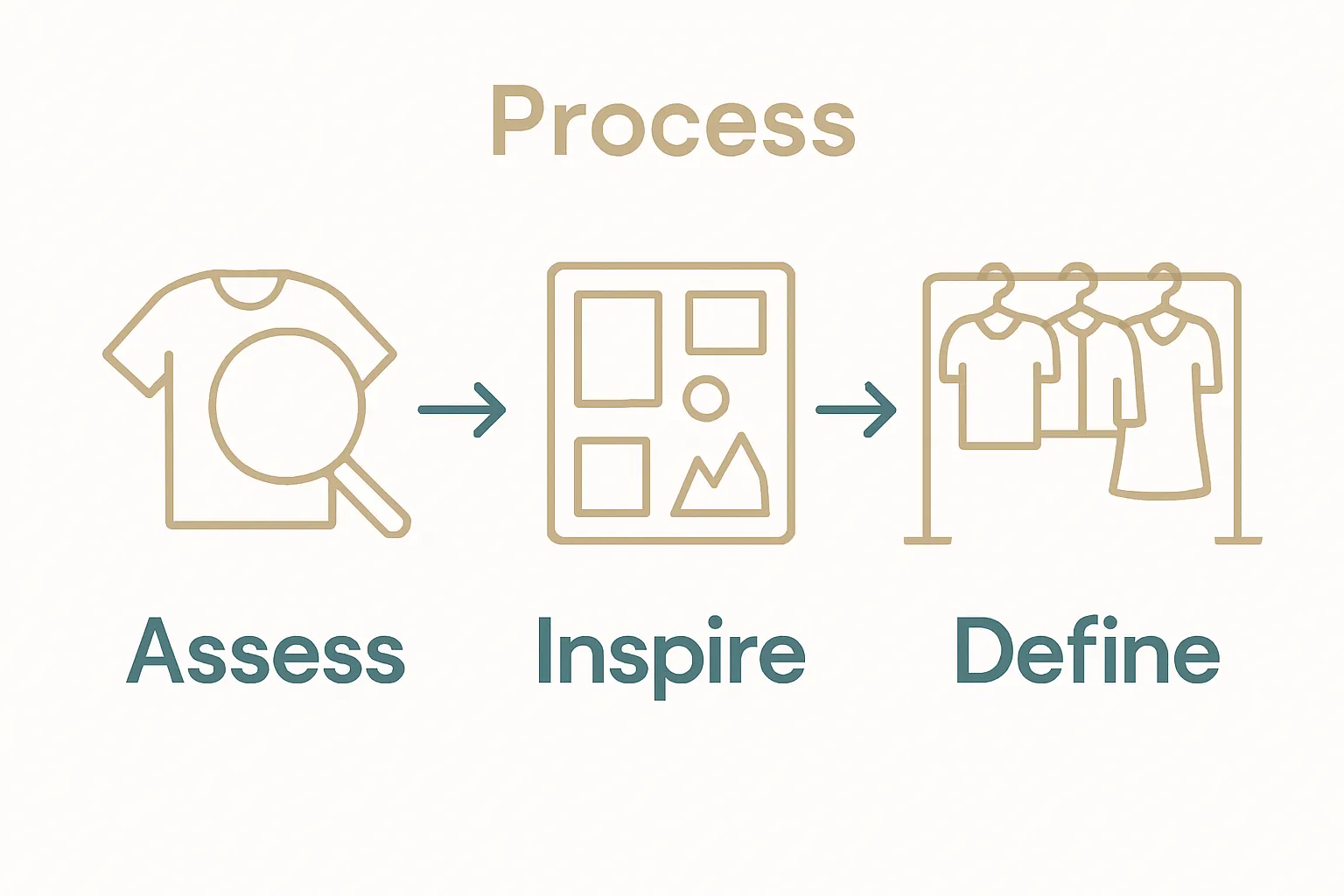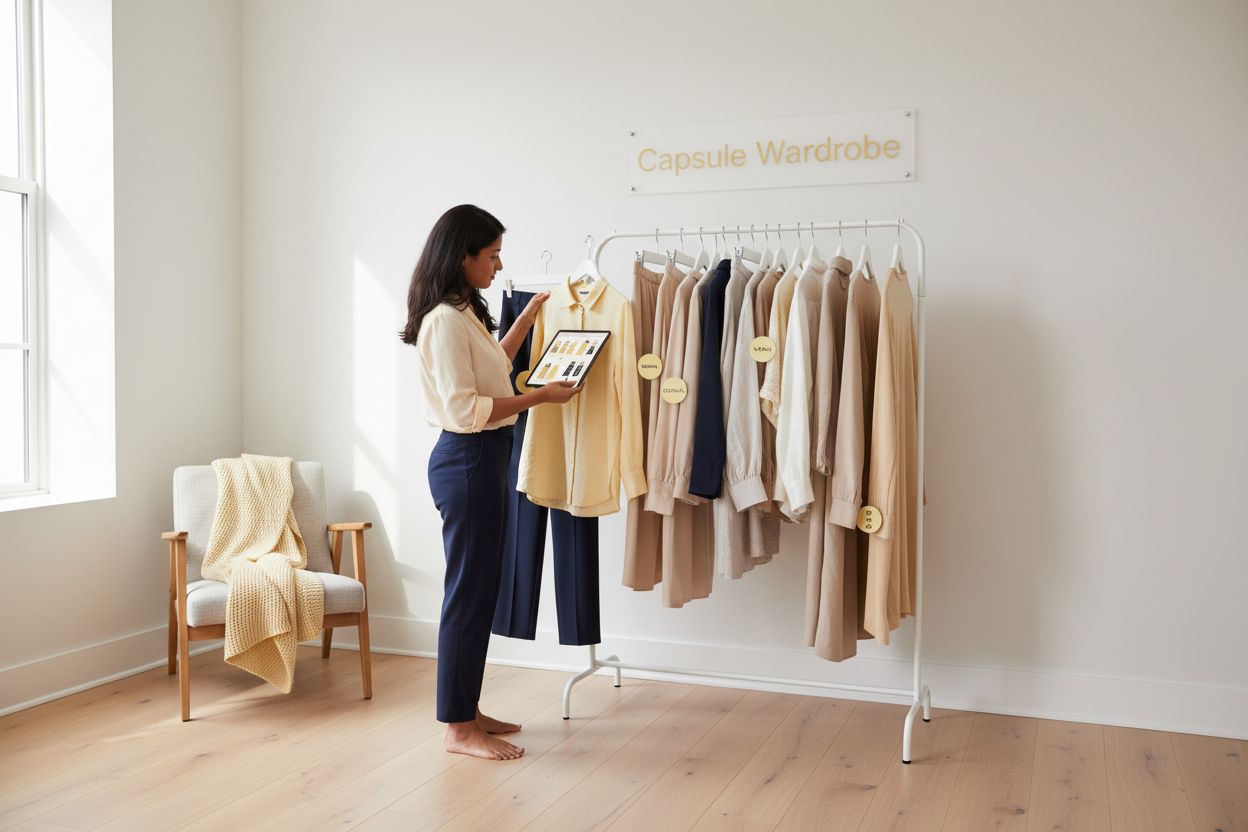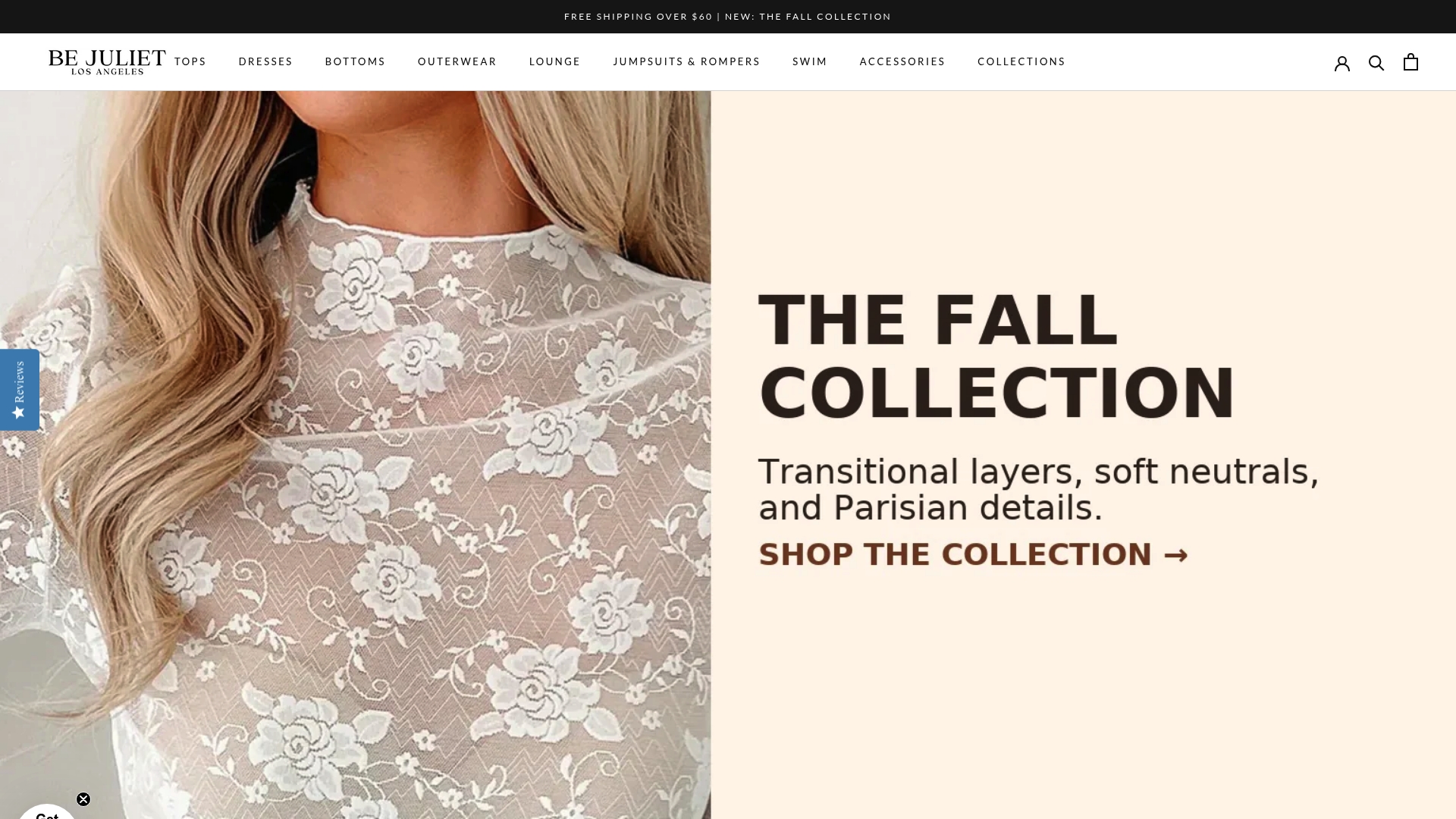How to Find Personal Style: A Step-by-Step Guide
Finding your personal style can feel confusing when trends change faster than the weather. Yet most people do not realize the biggest clues about what actually suits them are already hiding in their own closets. In fact, your wardrobe probably holds several recurring pieces that quietly reveal your unique fashion fingerprint. Spotting these patterns is not just about clothes, it is the key to unlocking self confidence every time you get dressed.
Table of Contents
- Step 1: Assess Your Current Wardrobe And Preferences
- Step 2: Identify Your Style Icons And Inspirations
- Step 3: Define Your Personal Style Aesthetic
- Step 4: Experiment With Outfits And Accessories
- Step 5: Curate A Versatile Capsule Wardrobe
- Step 6: Evaluate And Adjust Your Style Regularly
Quick Summary
| Key Point | Explanation |
|---|---|
| 1. Assess Your Wardrobe Thoroughly | Evaluate your existing clothing to identify personal style preferences and patterns. This first step lays the groundwork for your personal style journey. |
| 2. Create Mood Boards of Style Icons | Collect images of those whose style resonates with you. Analyze these inspirations to understand the elements that draw you to their looks. |
| 3. Define Your Style Aesthetic | Categorize your inspirations into distinct styles. This helps create a clear fashion blueprint that aligns with your personality and lifestyle needs. |
| 4. Experiment with Outfits | Try mixing and matching clothing pieces in unexpected ways to discover new styles. Photographic records can help track your evolving fashion sense. |
| 5. Curate a Capsule Wardrobe | Streamline your clothing collection into versatile pieces that reflect your aesthetic. This focuses on quality and allows for easy outfit creation while expressing your style. |
Step 1: Assess Your Current Wardrobe and Preferences
Discovering your personal style begins with a thorough exploration of your existing wardrobe. This foundational step helps you understand your current fashion preferences, identify recurring patterns, and recognize the clothing pieces that truly resonate with your personality. Consider this an investigative journey into your sartorial self.
Start by clearing out a dedicated space where you can spread out all your clothing. Pull everything from your closet, drawers, and storage areas. Sort your items into clear categories: pieces you wear frequently, garments that rarely see the light of day, and those special occasion outfits. As you sort, pay attention to the colors, cuts, and styles that appear most often. These recurring elements are crucial clues to your inherent style preferences.
While examining your wardrobe, take detailed notes about what you observe. Look for consistent color palettes, fabric textures, and silhouettes that make you feel confident. Do you gravitate towards structured blazers or flowy dresses? Are neutrals your comfort zone, or do you love bold prints? Make mental and written observations about the clothing that makes you feel most like yourself. Learn more about creating a capsule wardrobe to streamline this process and gain deeper insights into your personal style.
Photograph your favorite outfits and pieces to create a visual reference. This documentation serves as a powerful tool for understanding your style evolution. Pay special attention to the items that consistently make you feel attractive, comfortable, and authentically you. These pieces are not just clothing but representations of your personal aesthetic and emotional connection to fashion.
The following checklist table helps guide you through a wardrobe assessment, ensuring you capture all the critical observations and organizational steps mentioned in the article.
| Action Item | What to Look For | Notes |
|---|---|---|
| Clear Out Clothing | Remove all clothing to a designated space | Helps visualize everything you own |
| Sort Items | Group by frequently worn, rarely worn, special occasion | Reveals usage patterns and outliers |
| Identify Recurring Elements | Note colors, cuts, and styles you wear most | Uncovers personal preferences |
| Record Observations | Take notes on patterns and feelings about items | Builds self-awareness of style |
| Photograph Favorites | Capture images of go-to outfits and pieces | Creates a reference for future inspiration |
| Reflect on Confidence | Focus on items making you feel attractive and comfortable | Pinpoints most authentic pieces |
By the end of this assessment, you should have a clear snapshot of your current style landscape. Look for patterns, emotional connections, and the underlying themes that define your wardrobe. This self reflection is the first critical step in transforming your personal style from something unconscious to an intentional, empowered expression of your unique identity.
Here is an overview table summarizing the main steps for finding your personal style, their purposes, and the key outcomes you can expect from each.
| Step | Purpose | Key Outcome |
|---|---|---|
| Assess Your Wardrobe | Identify what you already own, wear, and love | Clarity on existing style and recurring wardrobe patterns |
| Find Style Icons & Inspirations | Gather visual sources to clarify appealing styles | Personalized mood board and inspiration for style direction |
| Define Your Style Aesthetic | Categorize preferences and align fashion with personality and lifestyle | Written and visual style manifesto |
| Experiment with Outfits & Accessories | Try new combinations to evolve and refine your style | Confidence and ideas from style experimentation |
| Curate a Capsule Wardrobe | Streamline clothing into versatile, mix-and-match pieces | Cohesive and functional wardrobe reflecting your style |
| Evaluate & Adjust Regularly | Revisit and refine your wardrobe as your style evolves | Adaptive, authentic personal style over time |
Step 2: Identify Your Style Icons and Inspirations
Style icons serve as powerful visual catalysts in understanding and developing your personal fashion narrative. This step transforms abstract fashion preferences into concrete inspiration by examining the individuals whose aesthetic consistently resonates with your inner vision. Your style icons are not just celebrities or models, but anyone whose fashion choices make you feel connected and inspired.
Begin your exploration by creating a visual mood board. Open platforms like Pinterest or Instagram and start collecting images of individuals whose style consistently catches your eye. Look beyond traditional fashion models and include musicians, actors, artists, and even friends or colleagues who embody a look that feels authentic and compelling. Pay attention to the details that draw you to their style select pieces that spark an emotional response rather than just trying to replicate an entire outfit.
Discover fresh fashion inspiration for 2025 to broaden your perspective and challenge your existing style boundaries. Think about the underlying qualities that attract you to these style icons. Are you drawn to their confidence? The way they mix unexpected textures? Their ability to balance comfort with elegance? Understanding these nuanced attractions helps you move beyond surface level imitation toward genuine personal style development.
Analyze your collected images for recurring themes. Look for consistent color palettes, silhouettes, fabric choices, and overall aesthetic approaches. Some people might find themselves attracted to minimalist, structured looks while others gravitate toward bohemian, layered ensembles. Your style icons reveal more about your fashion philosophy than simply what you want to wear they showcase how you want to feel and present yourself to the world.
By the conclusion of this step, you should have a curated collection of visual inspirations that reflect your emerging personal style. These references are not blueprints to copy exactly, but rather dynamic mood boards that illuminate your unique fashion sensibilities. Trust your intuition and remember that personal style is about expressing your most authentic self through clothing.
Step 3: Define Your Personal Style Aesthetic
Defining your personal style aesthetic transforms abstract inspiration into a tangible fashion blueprint. This critical step bridges the gap between admiring styles and owning a distinctive look that feels authentically yours. Your aesthetic is more than clothing choices it represents your inner narrative told through visual expression.
Begin by categorizing the visual inspirations you collected in the previous step. Group your collected images into distinct style categories like classic, bohemian, minimalist, edgy, or eclectic. Notice the underlying themes that emerge common colors, silhouettes, or emotional qualities that consistently appear across your selections. Explore what defines a signature look to deepen your understanding of personal style development.
Consider the lifestyle and practical realities that will influence your aesthetic choices. Your personal style must harmonize with your daily activities, professional environment, and personal comfort levels. A stunning haute couture ensemble means little if it doesnt allow you to move confidently through your world. Think about the balance between aspiration and functionality. An ideal aesthetic feels like a natural extension of your personality rather than a costume or uncomfortable performance.
Create a written and visual style manifesto that captures your emerging aesthetic. Describe the emotional qualities you want your clothing to communicate confidence, creativity, professionalism, or playfulness. Document the color palettes, fabric textures, and silhouettes that resonate most strongly. This manifesto becomes your personal style compass a dynamic document that can evolve as you grow and change.

By the end of this step, you should have a clear conceptual framework for your personal style. Your aesthetic is not a rigid set of rules but a flexible, living expression of your inner self. Trust your intuition and remember that true style comes from wearing clothing that makes you feel powerfully and unapologetically like yourself.
Step 4: Experiment with Outfits and Accessories
Experimentation is the heartbeat of personal style development. This step transforms your aesthetic vision from theoretical concept to lived reality through intentional outfit creation and accessorizing. Treating your wardrobe like a creative laboratory allows you to discover unexpected combinations and understand how individual pieces interact.
Begin by challenging yourself to mix pieces you would not typically pair together. Take items from different sections of your wardrobe and create unexpected ensembles. This approach disrupts conventional styling patterns and helps you understand how texture, color, and silhouette communicate through clothing. Learn expert techniques for mixing and matching outfits to expand your styling horizons and build confidence in your fashion choices.
Photograph your experimental outfits to create a visual record of your style evolution. These images serve multiple purposes they help you track your progress, identify successful combinations, and build a personal lookbook that reflects your developing aesthetic. Pay attention to how different accessories transform a basic outfit subtle changes like switching a belt, adding a statement necklace, or choosing different shoes can completely alter an ensembles emotional tone.
Consider scheduling occasional style challenge days where you intentionally step outside your comfort zone. This might mean wearing a bold color you typically avoid, trying a silhouette that feels unfamiliar, or layering pieces in unconventional ways. The goal is not perfection but exploration. Every outfit is a learning experience that brings you closer to understanding your unique style language.
By the conclusion of this step, you should feel more confident in your ability to create outfits that feel authentically you. Your experimental approach transforms personal style from a static concept into a dynamic, evolving form of self expression. Remember that true style is not about following rules but about communicating your inner narrative through clothing.
Step 5: Curate a Versatile Capsule Wardrobe
A capsule wardrobe represents the pinnacle of intentional personal style transforming your closet from a chaotic collection into a carefully curated set of versatile, interchangeable pieces. This strategic approach focuses on quality over quantity, ensuring every item serves multiple purposes and reflects your unique aesthetic.
Begin by conducting a ruthless assessment of your current wardrobe. Remove items that do not align with your defined personal style aesthetic from previous steps. Focus on selecting foundational pieces that can be mixed and matched effortlessly. Neutral colors like black, white, navy, and tan form an excellent base, allowing for maximum versatility and ease of styling. Explore tips for creating a stylish capsule wardrobe to refine your approach and understand the nuanced art of strategic clothing selection.
Consider the principle of intentional versatility when selecting each piece. A perfect capsule wardrobe item should work in at least three different outfit configurations. A blazer, for instance, might pair with tailored trousers for a professional look, dress down with jeans for a casual weekend outfit, or layer over a summer dress for evening elegance. This approach requires thoughtful selection and a keen understanding of how individual pieces can communicate different moods and purposes.
Document your capsule wardrobe process by creating a digital or physical lookbook that showcases potential outfit combinations. Photograph each piece and experiment with layering and accessorizing to maximize their potential. Pay attention to fabric quality, fit, and how each item makes you feel. A truly effective capsule wardrobe is not just about looking good but about feeling confident and authentic in every ensemble.
By the conclusion of this step, you should have a streamlined collection of clothing that tells a cohesive style story. Your capsule wardrobe becomes a powerful tool of self expression a carefully curated reflection of your personal aesthetic that simplifies daily dressing while amplifying your unique fashion voice.

Step 6: Evaluate and Adjust Your Style Regularly
Personal style is not a static destination but a dynamic journey of continuous self discovery and refinement. Regularly evaluating and adjusting your style ensures that your wardrobe remains an authentic reflection of your evolving identity and lifestyle. This final step transforms personal style from a one time achievement into an ongoing creative process.
Schedule quarterly style review sessions where you critically examine your current wardrobe and aesthetic choices. During these sessions, assess how well your clothing aligns with your defined personal style manifesto. Ask yourself provocative questions about each piece does this item still make me feel confident? Does it represent who I am right now? Explore how to understand your unique fashion sense to deepen your self awareness and style evolution.
Treat your style review as an opportunity for honest self reflection. Life transitions personal growth career changes and shifting body dynamics all impact how we want to present ourselves to the world. Your wardrobe should be a living, breathing ecosystem that adapts alongside your personal narrative. This might mean gradually replacing pieces that no longer serve you with items that better represent your current aesthetic and emotional landscape.
Document your style evolution through periodic photographic evidence. Create a digital or physical mood board that tracks your aesthetic journey. These visual archives not only provide fascinating insight into your personal development but also help you recognize patterns in your style preferences. Pay attention to recurring colors, silhouettes, and emotional qualities that consistently attract you. Understanding these subtle consistencies helps you make more intentional fashion choices moving forward.
By the conclusion of this step, you will have transformed personal style from a singular achievement into a dynamic, lifelong practice of self expression. Your wardrobe becomes a powerful tool for communication a carefully curated reflection that tells your unique story with nuance, confidence, and authenticity.
Transform Your Personal Style into Reality with Be Juliet
Finding your personal style can feel overwhelming when you are staring at a closet of mismatched pieces that do not truly represent you. This step-by-step guide helps you explore your wardrobe, define your unique aesthetic, and experiment with new looks. But pain points still linger. How do you bridge inspiration with clothing that lets you express love, confidence, and your evolving identity?
Experience the ease of building your new style with curated collections at Be Juliet. Discover statement pieces that help articulate who you are, like our striking Corsets / Bustiers designed for bold elegance or subtle empowerment. Whether you are in the mood for something daring or seeking simplicity that feels just right, our range celebrates every side of your femininity.

Let your style journey lead to action. Browse Be Juliet now and start curating a wardrobe that matches your authentic self. Elevate your capsule closet, embrace comfort, and unlock pieces that support your ongoing evolution. Begin today and let every outfit tell your story.
Frequently Asked Questions
How do I assess my current wardrobe to find my personal style?
Start by clearing out your wardrobe and categorizing your clothing into frequently worn pieces, rarely worn items, and special occasion outfits. Take note of the recurring colors, cuts, and styles that resonate with you to discover your inherent style preferences.
What is the significance of style icons in developing my personal fashion narrative?
Style icons serve as inspirational references that help you understand and articulate your fashion preferences. By analyzing their aesthetics, you can identify qualities and styles that resonate with you, guiding you towards your own personal style.
How can I define my personal style aesthetic?
Begin by categorizing the visual inspirations you’ve collected into distinct style categories (e.g., classic, bohemian, minimalist). Document the emotional qualities you want your clothing to convey, and create a style manifesto that reflects your unique aesthetic.
What steps should I take to curate a versatile capsule wardrobe?
Conduct an assessment of your wardrobe and remove items that don’t align with your personal style. Focus on choosing versatile pieces in neutral colors that can be mixed and matched. Aim for items that can create multiple outfits to simplify your daily dressing while reflecting your style.
Recommended
- What is Personal Style: Understanding Your Unique Fashion Sense – Be Juliet
- What is a Signature Look? Understanding Personal Style – Be Juliet
- Understanding the Difference Between Fashion and Style – Be Juliet
- How to Find Fashion Inspiration: Fresh Ideas for 2025 – Be Juliet
- Understanding Personal Style Development for Special Events - DressMeUpNY
- What is Statement Jewelry: Understanding Its Impact and Style – Malibu Vibes Jewelry
